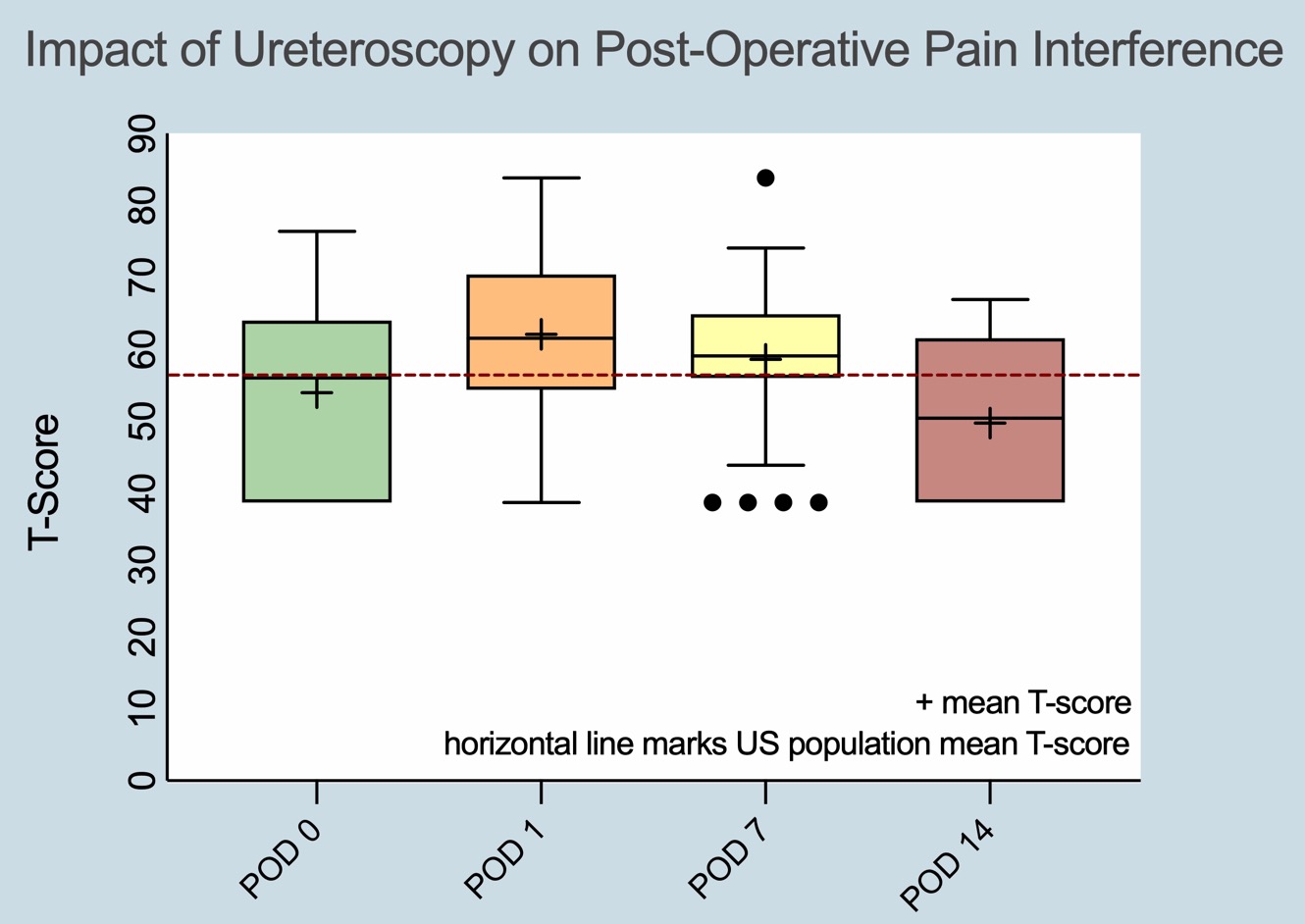Back
Poster, Podium & Video Sessions
Moderated Poster
MP14: Stone Disease: Surgical Therapy (including ESWL) I
MP14-16: Post-Operative Pain and Recovery in Patients with Nephrolithiasis: Results from the Endourologic Society TOWER Research Collaborative
Friday, May 13, 2022
2:45 PM – 4:00 PM
Location: Room 225
Amanda Jones*, Christian Rodriguez, George Lin, Hanna Stambakio, Philadelphia, PA, Ben Chew, Vancouver , Canada, Joshua Stern, Park City, UT, Justin Ziemba, Philadelphia, PA
- AJ
Amanda E. Jones, MD
University of Pennsylvania Perelman School of Medicine
Poster Presenter(s)
Introduction: Nephrolithiasis is among the most common urological conditions. However, the impact of the disease on quality of life remains significantly understudied, particularly following surgical intervention. We prospectively captured patient-reported pain interference in patients following ureteroscopy (URS) or percutaneous nephrolithotomy (PCNL) for nephrolithiasis.
Methods: Adults undergoing URS or PCNL for renal/ureteral stones were eligible for inclusion (10/2020-10/2021). Patients prospectively completed PROMIS- Pain Interference instrument pre-operatively (POD 0) and via email on POD 1, 7, and 14. Scores are reported as T-scores (normalized to US pop., mean=50) with a change of 5 (0.5 SD) considered clinically significant. All post-operative ureteral stents and/or nephrostomy tubes were removed by POD 7.
Results: A total of 145 patients completed enrollment, 102 of which underwent URS and 43 of which underwent PCNL. For URS, there was an acute increase in pain interference between POD 0 and 1, but this recovered and even improved to below the baseline between POD 7 and 14 (repeated measures ANOVA; p <0.05) (Figure 1). For PCNL, there was a similar acute increase in pain interference between POD 0 and 1, but this was improved, although not completely recovered to the baseline even at POD 14 (repeated measures ANOVA; p<0.05) (Figure 2).
Conclusions: Pain interference on work, family, and social obligations increases immediately post-operatively for both patients undergoing URS and PCNL. However, there appears to be a relatively rapid recovery for patients undergoing URS between POD 7 and 14, but patients undergoing PCNL experience a less drastic recovery with continued pain interference, albeit minimal beyond POD 14. Results offer meaningful insights to assist in counseling patients prior to the surgical treatment of nephrolithiasis.
Source of Funding: None.

Methods: Adults undergoing URS or PCNL for renal/ureteral stones were eligible for inclusion (10/2020-10/2021). Patients prospectively completed PROMIS- Pain Interference instrument pre-operatively (POD 0) and via email on POD 1, 7, and 14. Scores are reported as T-scores (normalized to US pop., mean=50) with a change of 5 (0.5 SD) considered clinically significant. All post-operative ureteral stents and/or nephrostomy tubes were removed by POD 7.
Results: A total of 145 patients completed enrollment, 102 of which underwent URS and 43 of which underwent PCNL. For URS, there was an acute increase in pain interference between POD 0 and 1, but this recovered and even improved to below the baseline between POD 7 and 14 (repeated measures ANOVA; p <0.05) (Figure 1). For PCNL, there was a similar acute increase in pain interference between POD 0 and 1, but this was improved, although not completely recovered to the baseline even at POD 14 (repeated measures ANOVA; p<0.05) (Figure 2).
Conclusions: Pain interference on work, family, and social obligations increases immediately post-operatively for both patients undergoing URS and PCNL. However, there appears to be a relatively rapid recovery for patients undergoing URS between POD 7 and 14, but patients undergoing PCNL experience a less drastic recovery with continued pain interference, albeit minimal beyond POD 14. Results offer meaningful insights to assist in counseling patients prior to the surgical treatment of nephrolithiasis.
Source of Funding: None.


.jpg)
.jpg)